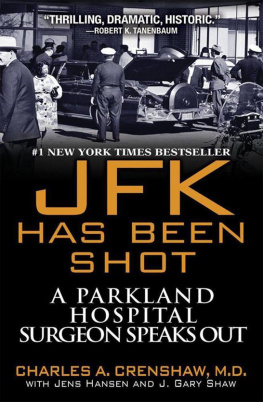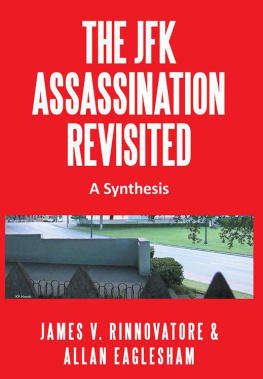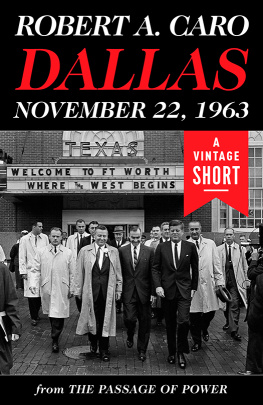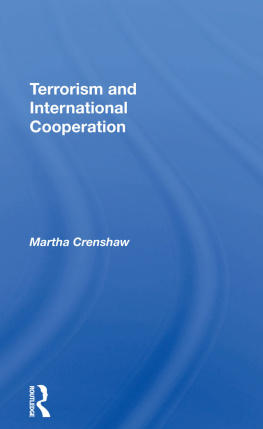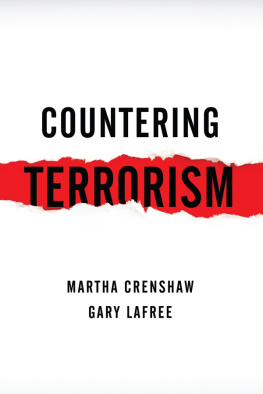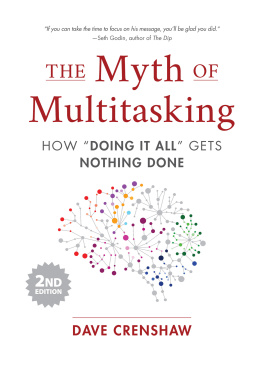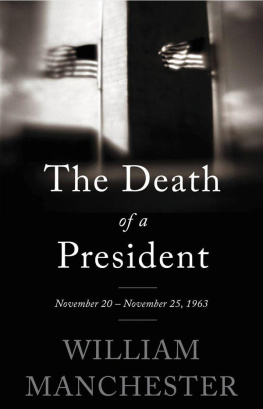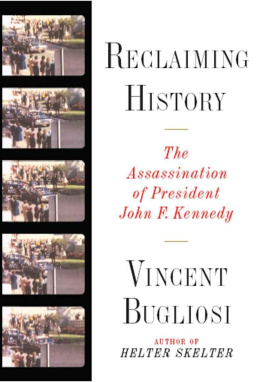WHY THIS BOOK WAS WRITTEN
I told my friend, the writer Jens Hansen, that I believed the Warren Commission Report to be a fable, a virtual insult to the intelligence of the American people. He asked me if I had ever considered letting someone help me write a book on the subject. I explained to him that we doctors who had worked on President Kennedy, whether out of respect or out of fear, had agreed not to publish what we had seen, heard, and felt.
Jens looked at me and said, I know youve heard this a million times, and I dont want to sound like Im preaching, but the American people have a right to know exactly what went on in Trauma Room 1, and exactly what you saw. Moreover, they have the right to know that their government was changed, that the course of history was dramatically altered in 1963 through a conspiracy to assassinate the President of the United States.
JFK H AS B EEN S HOT
C HARLES A. C RENSHAW , M.D., WITH J ENS H ANSEN AND J. G ARY S HAW
F OREWORD BY R OBERT K. T ANENBAUM

PINNACLE BOOKS
Kensington Publishing Corp.
http://www.kensingtonbooks.com

All copyrighted material within is Attributor Protected.
To the residents and attending medical staff
of that era at Parkland,
and to Dr. G. Tom Shires, the Chief.
Table of Contents
FOREWORD
Introduction
When the government engages in an official inquiry into a matter of extreme public concern, the government is obligated, in good faith, to search for truth without fear or favor and report its findings to the people. Pursuant to this self-evident truth, the Warren Commission (WC) failed in its attempt to engage in a thorough, comprehensive and professional investigation into all aspects of the assassination of President John F. Kennedy. One of the central reasons for its abject shortcomings was that the Federal Bureau of Investigation (FBI), its primary responsible investigative agency, had prior to the WC investigation already concluded that Lee Harvey Oswald was the lone gunman and had acted without foreign intervention. The resulting WC alleged investigation was a sham, a charade that short-circuited a legitimate probe. Credible witnesses with vital evidence that contradicted the preconceived FBI conclusion were ignored. Dr. Charles Crenshaws book demonstrates this critical failure. It gives credence to the public perception that the WC report was less than sincere in fulfilling its mission. Moreover, because of the overwhelming impact that the assassination had on our country, coupled with the WC faux investigation, overall government credibility suffered a stunning blow. I offer the following to suggest how and why it happened.
Analysis/Discussion
The Kennedy assassination was a colossal outrage. It fractured our fundamental belief in the orderly process of our political institutions. Camelot was shattered; and with it, all of its politically inspired romantic imagery vanishedits portrayal of a neo-idealism of truthful, just government analyses and pronouncements, constitutional equality, merit-based advancement and transparency of process disappeared.
The gut-wrenching events of November 22, 1963, in Dallass Dealey Plaza paralyzed the nation. It was a political and personal catastrophe. We lost our President.
Shortly thereafter, within weeks, FBI Director J. Edgar Hoover proclaimed that the assassin, Lee Harvey Oswald, acted alone without foreign intervention. Case closed! The government sought closure. The people demanded the truth. Portents of a winter of despair were about to dawn.
Over the years, the Kennedy assassination has receded into mythology and has becomelike the tales of the Old West and the lives of secular saints such as Washington and Lincolnfair game for the fabulist, the moralist and the entertainer. Libraries have been filled with books offering vying theories; some have been in support of the WC and some indignantly opposed. All postulate with passionate certainty the righteousness of their cause. To be sure, some treatises rise to the level of admirable scholarship. The most outstanding and valuable of those are narrations by the authors who actually played a significant role in the historical events.
Dr. Charles Crenshaw, a renowned surgeon with an acclaimed expertise in treating trauma victims, attended to President Kennedy in the emergency room inside Parkland Memorial Hospital just moments after the fatal bullets blasted through the presidents head, causing his death. JFK Has Been Shot recounts in vivid detail those tempestuous, spellbinding percipient firsthand observations, analyses and medical procedures undertaken to try and save Kennedys life. Dr. Crenshaw documented these events with a medical precision that memorialized an evidentiary foundation revealing tracks of bullets entries and exits passing into and out of Kennedys body and the condition of Kennedys head wounds.
Dr. Crenshaws participation inside Trauma Room 1 made him an important witness in the truth-finding process. Yet, this doctor and some of his colleagues who offered emergency care to the president and whose observations were corroborated and memorialized in writings and diagrams were never called to give testimony to the WC. In his book, Dr. Crenshaw informs as to the testimony in substance that he would have tendered. Most notably, based upon his expert findings, were his conclusions that the fatal shots, which killed Kennedy, entered the presidents head and body from the geographical right front area (the grassy knoll) and not from the rear (the Texas School Book Depository building). Certainly, Dr. Crenshaws expert testimony would have put into question the WC findings by contradicting its central theme that Oswald shot the president from the rear as the motorcade passed the depository building.
This extraordinary WC omission and failure to chronicle accurately the assassination events appears in other relevant areas as well. In so doing, the WC created a fog of deception that has substantially called into question its authenticity and credibility.
Why would the Commission not call Dr. Crenshaw, a highly credible expert whose opinions were invaluable in its alleged search for truth? And why did the Commission ignore trustworthy evidence and render conclusions to buttress a false narrative?
Certainly, if the WC was engaged in a virtuous search for truth, then there is no rational reason to omit Dr. Crenshaw and his corroborating evidence from the official record. However, if the WC was a facade devoid of investigative legitimacy designed to tailor its faux investigation to a predetermined conclusion, then one readily accepts the reality of its deception. The people expected a straightforward, fact-finding foray leading to historical truth. Instead, it was given a Lewis Carroll Through the Looking-Glass fantasy form of due process: first the sentence, then the trial. And if the accused is thereafter found not guilty, All the better! says the Queen.
In early 1977, I was deputy chief counsel to the congressional committee investigation into the assassination of President Kennedy During the course of my probe, I came into possession of a memo dated November 23, 1963, from J. Edgar Hoover to all Bureau supervisory personnel. It stated, inter alia in substance, that the FBI agents who had questioned Lee Harvey Oswald for approximately seventeen hours immediately after Oswalds arrest had listened to a taped conversation between an individual who identified himself as Lee Oswald and an individual in the Cuban Embassy. The conversation originated inside the Russian Embassy in Mexico City by this faux Oswald, who telephoned the Cuban Embassy. The call was made on or about October 1, 1963, just about seven weeks before the assassination. The Hoover memo noted that the agents categorically concluded that the voice on the tape was not that of Lee Harvey Oswald. Based upon the evidence adduced during the investigation, I had reason to believe that David Phillips, the third-ranking member of the Central Intelligence Agency (CIA) in charge of Western Hemispheric operations, employed a nom de guerre, Maurice Bishop. Bishop had significant involvement with anti-Castro Cubans and Lee Harvey Oswald.
Next page
